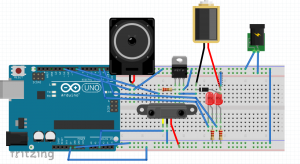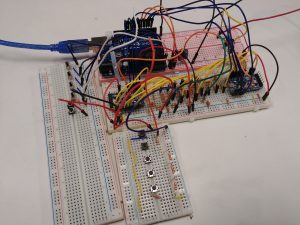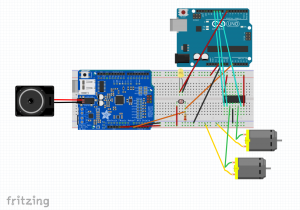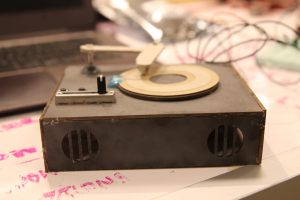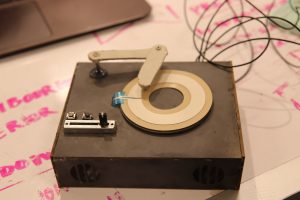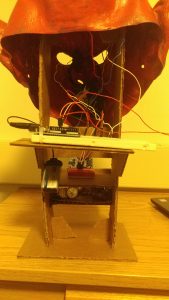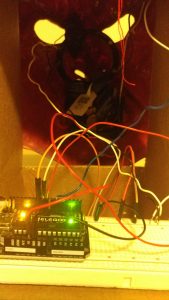For this project I was inspired by the accordion – the way it moves and creates sound – to make a musical instrument. The instrument is made of a living hinge with a flex sensor that controls volume, and keys that each play a note using an eight-channel capacitive sensor. I wanted to make an interactive piece with which you could create music, and I also wanted to explore the flexibility and organic feel of a living hinge.
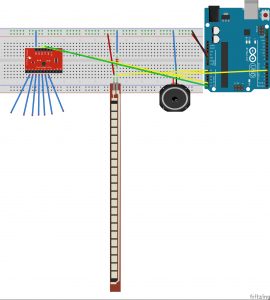
The flex sensor and volume control part went pretty smoothly, but I ran into a few challenges with the capacitive sensors. The wires were very very sensitive if they bumped against one another, so in the end I could not have all 8 keys because the holes are too close together, so I had to do 4. If I could do this project again, I would add another speaker and more capacitive touch sensors so that I could play chords, and I would add an option to change the scale (default is A major). Overall, I am pretty happy with the way it turned out – I had fun playing with the living hinge and learning how to use capacitive sensors.
sketch: Assignment5-sketch-NinaPrakash
